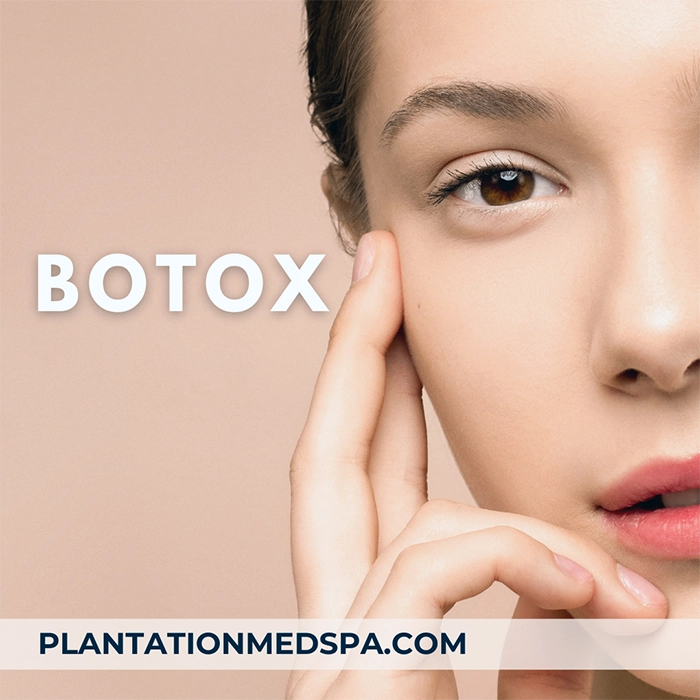Understanding Pillow Face: Prevention and Treatment Guide
Table of Contents
What is Pillow Face A Guide to prevent it and treat it
Common Causes of Pillow Face
Identifying the Signs of Pillow Face
Psychological Impact of Pillow Face
Prevention Strategies for Pillow Face
Choosing the Right Filler
The Importance of Qualified Practitioners
Non-surgical treatments for Pillow Face
Surgical Options for Severe Cases
Skincare Routines to Support Treatment
Role of Diet and Hydration
Importance of Regular Follow-Ups
Real-Life Success Stories
Cost of Treating Pillow Face
Future Trends in Aesthetic Treatments
Factors Affecting the Cost of Treating Pillow Face
Frequently Asked Questions (FAQs)
Conclusion
Invest in Your Beauty
References
What is Pillow Face A Guide to prevent it and treat it
Pillow face is a term used to describe an overfilled or excessively plumped appearance of the face, often resulting from too much dermal filler.
This condition is characterized by overly smooth, round, and puffy facial features, giving the face an unnatural look. The phenomenon has become more familiar with the popularity of non-surgical facial rejuvenation treatments.
Pillow face occurs when fillers are injected improperly or excessively, leading to a loss of natural facial contours. While fillers can be an excellent way to restore volume and reduce wrinkles, achieving a natural look requires skill and precision.
Understanding the underlying causes and recognizing the signs early can help prevent this undesirable outcome.
Common Causes of Pillow Face
One of the primary causes of pillow face is the overuse of dermal fillers. Patients seeking immediate and dramatic results might request large filler volumes, not realizing the long-term implications.
Additionally, inexperienced or unqualified practitioners may need more expertise to administer fillers properly, leading to overfilling or incorrect placement.
Another contributing factor is the misunderstanding of facial anatomy. Each area of the face responds differently to fillers, and overfilling one area can create an imbalance that affects the overall harmony of facial features.
This is why it’s crucial to seek treatment from professionals who deeply understand the facial structure and the behavior of various fillers.
Identifying the Signs of Pillow Face
The first sign of a pillow face is an unnaturally smooth and puffy appearance, especially around the cheeks and under the eyes.
The skin may appear tight and shiny, and facial expressions can become limited due to the excessive volume. This overfilled look can differ from the subtle enhancement most people desire.
Other signs include the loss of natural facial contours and asymmetry. For instance, the cheeks may look disproportionately large compared to other facial features, or there may be noticeable lumps and bumps where the filler has been injected unevenly.
Recognizing these signs early can help address the issue before it becomes more pronounced.
Psychological Impact of Pillow Face
The psychological effects of pillowfacing can be significant.
Individuals may feel self-conscious or embarrassed about their appearance, leading to a loss of confidence and social anxiety. The discrepancy between their expected results and the reality of an overfilled face can be distressing.
Moreover, negative attention or comments from others can exacerbate insecurity. This highlights the importance of managing expectations and choosing qualified practitioners to provide realistic outcomes. Addressing the psychological impact is as important as treating the physical symptoms, ensuring overall well-being.
Prevention Strategies for Pillow Face
Prevention is always better than cure when it comes to pillow face. One of the most effective strategies is to start with conservative amounts of filler and gradually build up if necessary.
This approach allows for minor adjustments and a more natural look, avoiding the risk of overfilling.
Another critical strategy is to thoroughly consult a qualified practitioner who can assess your facial anatomy and recommend the appropriate type and amount of filler. Understanding the risks and benefits and having realistic expectations can significantly reduce the chances of developing a pillow face.
Choosing the Right Filler
Not all fillers are created equal; choosing the right one is crucial for avoiding a pillow face. Hyaluronic acid-based fillers are popular due to their natural look and reversibility. They integrate well with the skin and can dissolve if the results are unsatisfactory.
Consult with your practitioner to understand the different types of fillers available and which one is best suited for your needs. Factors such as skin type, age, and the specific area being treated will influence the choice of filler. An informed decision can help achieve a balanced and natural-looking enhancement.
The Importance of Qualified Practitioners
The skill and expertise of the practitioner play a pivotal role in preventing pillowfacing. Look for board-certified practitioners with extensive experience in administering dermal fillers. They should deeply understand facial anatomy and the techniques required for different face areas.
During your consultation, ask to see before-and-after photos of previous patients and inquire about their approach to achieving natural results. A qualified practitioner will take the time to understand your goals and tailor the treatment accordingly, ensuring the best possible outcome.
Non-surgical treatments for Pillow Face
If you’re already experiencing pillowfacing, there are non-surgical options to correct it. One standard treatment is hyaluronidase, an enzyme that dissolves hyaluronic acid-based fillers. This procedure can reduce the excess volume and help restore a more natural appearance.
Another option is laser therapy, which can tighten the skin and improve its texture. Radiofrequency treatments are also effective in reducing puffiness and stimulating collagen production. These non-surgical approaches can be an excellent solution for mild to moderate cases of pillow face.
Surgical Options for Severe Cases
In severe cases, surgical intervention may be necessary to correct the pillow face. This can involve a facelift or fat grafting, where fat is removed from one body area and injected into the face to restore natural contours. These procedures require a high level of expertise and should only be performed by experienced plastic surgeons.
Surgical options are usually considered when non-surgical treatments are insufficient or if there is significant tissue distortion. A thorough evaluation by a qualified surgeon can help determine the best course of action to achieve a more balanced and youthful appearance.
Skincare Routines to Support Treatment
A good skincare routine can complement the treatment of the pillow face and enhance overall results. Focus on products promoting skin health, such as antioxidants, retinoids, and peptides. These ingredients can help improve skin texture and elasticity, supporting the effects of dermal fillers.
Additionally, regular exfoliation and hydration are essential for maintaining healthy skin. Consult with your practitioner to develop a skincare regimen tailored to your needs, ensuring your skin remains in optimal condition throughout treatment.
Role of Diet and Hydration
Diet and hydration play a crucial role in maintaining healthy skin and supporting the effects of aesthetic treatments. A balanced diet rich in vitamins and minerals can improve skin health and promote healing. Foods high in antioxidants, like fruits and vegetables, can protect the skin from damage and enhance its natural glow.
Staying hydrated is equally important, as it helps maintain skin elasticity and plumpness. Drinking plenty of water and incorporating hydrating foods into your diet can support the overall effectiveness of filler treatments and reduce the risk of complications.
Importance of Regular Follow-Ups
Regular follow-up appointments with your practitioner are essential for monitoring the results of filler treatments and making any necessary adjustments.
These appointments allow for early detection of any issues, such as uneven distribution of fillers or the development of pillow faces.
Follow-ups also allow you to discuss your satisfaction with the results and explore additional treatments if needed. Open communication with your practitioner ensures that your aesthetic goals are met and helps prevent long-term complications.
Real-Life Success Stories
Hearing from individuals who successfully treated pillow faces can be inspiring and reassuring.
Many people have achieved natural and balanced results by following the right treatment plan and working with qualified practitioners. Success stories highlight the importance of patience, proper technique, and realistic expectations.
These stories can also provide valuable insights into correcting pillow faces, offering hope to those struggling. Knowing that others have overcome similar challenges can motivate you to pursue the best possible outcome for yourself.
Cost of Treating Pillow Face
The cost of treating a pillow face can vary widely depending on the severity of the condition and the chosen treatment method. Non-surgical treatments such as hyaluronidase injections or laser therapy may be more affordable, while surgical options like facelifts can be significantly more expensive.
Considering the long-term benefits and potential savings of choosing the proper treatment from the start is essential. Investing in a qualified practitioner and appropriate treatments can prevent the need for corrective procedures, ultimately saving time and money.
Future Trends in Aesthetic Treatments
The field of aesthetic treatments is continuously evolving, with new technologies and techniques emerging to address issues like pillowfacing. Future trends may include more advanced filler formulations that mimic natural tissue more closely, reducing the risk of overfilling.
Innovations in non-invasive treatments, such as improved laser and radiofrequency devices, are also expected to provide better results with minimal downtime.
Staying informed about these trends can help you make educated decisions about your aesthetic treatments and ensure the best possible outcomes.
Factors Affecting the Cost of Treating Pillow Face
- Severity of Condition: More severe cases require extensive treatment High
- Type of Treatment: Surgical treatments are more expensive than non-surgical Variable
- Practitioner’s Expertise: Experienced practitioners may charge higher fees High
- Geographic Location: Costs vary by region and clinic location Variable
- Number of Sessions: Multiple sessions increase overall costs High
- Type of Filler Used: Different fillers have varying costs Variable
- Additional Procedures: Combining treatments increases the cost of High
- Clinic Facilities: High-end clinics may charge more Variable
- Follow-up care: Necessary for optimal results and may incur extra costs Moderate
- Customization of Treatment Plan: Tailored plans can be more expensive High
Frequently Asked Questions (FAQs)
1. What is a pillow face?
Concise Answer: The pillow face has an overfilled, puffy facial appearance caused by excessive dermal filler use.
Detailed Answer: Pillow face occurs when too much dermal filler is injected into the face, resulting in an unnatural, overly smooth, and round appearance. This condition can make facial features look puffy and distorted, losing the natural contours and expressions.
2. How can I prevent a pillow face?
Concise Answer: Prevent pillow face by using conservative amounts of filler and choosing qualified practitioners.
Detailed Answer: To prevent pillow face, start with small amounts of filler and gradually increase if necessary. Consult with experienced practitioners who understand facial anatomy and can administer fillers precisely. This approach ensures natural and balanced results.
3. Are there treatments for pillow faces?
Concise Answer: Yes, treatments include hyaluronidase injections, laser therapy, and, in severe cases, surgery.
Detailed Answer: Pillow face can be treated with non-surgical methods like hyaluronidase to dissolve excess filler and laser therapy to improve skin texture. In severe cases, surgical options such as facelifts may be required to restore natural facial contours.
4. What causes pillow face?
Concise Answer: Pillow face is caused by the overuse of dermal fillers and improper injection techniques.
Detailed Answer: The primary cause of pillow face is the excessive use of dermal fillers, often due to patients seeking dramatic results or practitioners lacking the expertise to administer fillers correctly. This leads to an unnatural, overfilled appearance.
5. How do I choose the right practitioner for fillers?
Concise Answer: Choose board-certified practitioners with extensive experience and a strong understanding of facial anatomy.
Detailed Answer: Selecting the right practitioner involves ensuring they are board-certified, have significant experience with dermal fillers, and possess a deep knowledge of facial anatomy. Reviewing before-and-after photos and patient testimonials can also help make an informed decision.
6. Can the pillow face be reversed?
Concise Answer: Yes, pillow face can be reversed with treatments like hyaluronidase to dissolve excess filler.
Detailed Answer: Pillow face can often be reversed using hyaluronidase, an enzyme that breaks down hyaluronic acid-based fillers. This treatment reduces the excess volume and helps restore a more natural appearance, especially when administered by a skilled practitioner.
7. How long do filler treatments last?
Concise Answer: Filler treatments typically last between 6 months to 2 years, depending on the type of filler.
Detailed Answer: The duration of filler treatments varies based on the type of filler used. Hyaluronic acid-based fillers usually last between 6 months to 2 years. The longevity of the results also depends on factors like the area treated and individual metabolism.
8. What are the risks of filler treatments?
Concise Answer: Risks include bruising, swelling, infection, and, in rare cases, tissue damage.
Detailed Answer: Dermal filler treatments carry bruising, swelling, and infection risks. In rare cases, improper injection techniques can cause tissue damage or block blood vessels, leading to severe complications. Choosing a qualified practitioner can minimize these risks.
9. How often should I get filler treatments?
Concise Answer: The frequency of filler treatments depends on the type of filler and individual needs, typically every 6-18 months.
Detailed Answer: The frequency of filler treatments varies based on the type of filler and personal aesthetic goals. Generally, touch-ups are recommended every 6-18 months to maintain desired results. Consulting with your practitioner can help determine the best schedule for you.
10. Are there natural alternatives to fillers?
Concise Answer: Yes, natural alternatives include skincare products, facial exercises, and lifestyle changes.
Detailed Answer: Natural alternatives to dermal fillers include using skincare products with ingredients like retinoids and peptides, performing facial exercises to tone muscles, and making lifestyle changes such as a healthy diet and staying hydrated. These methods can help improve skin appearance without invasive treatments.
11. What should I expect during a filler treatment?
Concise Answer: Expect a consultation, the application of a numbing agent, and precise filler injections during treatment.
Detailed Answer: During a filler treatment, you will first have a consultation to discuss your goals. A numbing agent is typically applied to minimize discomfort. The practitioner will then inject the filler precisely into the targeted areas. The entire process usually takes about 30-60 minutes.
12. How do I care for my skin after filler treatment?
Concise Answer: Post-treatment care includes avoiding strenuous activities, staying hydrated, and following skincare recommendations.
Detailed Answer: After a filler treatment, avoiding strenuous activities for 24-48 hours is essential to reduce swelling and bruising. Staying hydrated and following a good skincare regimen, as your practitioner recommends, can enhance the results and maintain healthy skin.
13. Can fillers be combined with other treatments?
Concise Answer: Yes, fillers can be combined with treatments like Botox, laser therapy, and chemical peels.
Detailed Answer: Dermal fillers can be combined with other aesthetic treatments, such as Botox for wrinkles, laser therapy for skin tightening, and chemical peels for improved skin texture. Combining treatments can address multiple concerns and provide more comprehensive results.
14. How do I know if I need fillers?
Concise Answer: You might need fillers if you notice volume loss, deep wrinkles or desire facial contour enhancement.
Detailed Answer: If you observe signs of aging like volume loss, deep wrinkles, or sagging skin or want to enhance facial contours, dermal fillers may be a suitable option. A consultation with a qualified practitioner can help determine if fillers suit you.
15. What are the benefits of hyaluronic acid fillers?
Concise Answer: Hyaluronic acid fillers provide natural-looking results, are reversible, and stimulate collagen production.
Detailed Answer: Hyaluronic acid fillers are popular because they offer natural-looking enhancements, are reversible with hyaluronidase, and stimulate collagen production. These fillers integrate well with the skin, providing a smooth and youthful appearance with minimal side effects.
Conclusion
Pillow face is an increasingly common concern due to the popularity of dermal fillers, but it is entirely preventable and treatable with the proper knowledge and approach. By understanding the causes, recognizing the signs, and choosing experienced practitioners, you can achieve natural, youthful results without the risk of overfilling. Both non-surgical and surgical treatments are available to correct the pillow face, offering hope for those who have experienced this issue.
Preventive strategies, such as starting with conservative amounts of filler and adhering to a proper skincare routine, play a crucial role in maintaining a balanced appearance. Staying informed about future trends in aesthetic treatments can also help you make educated decisions, ensuring long-lasting and satisfying results.
Invest in Your Beauty
If you’re considering dermal filler treatments or need corrective procedures for pillow face, trust our experienced team at Plantation Med Spa in Florida.
Our board-certified practitioners are dedicated to delivering natural, beautiful results.
Book your consultation today and take the first step towards confidently achieving your aesthetic goals.
References
- Beverly Hills Wellness Center & Med Spa, Florida
- Dr. Dahabra
- West Palm Beach IV Therapy Medical Clinic
- Hyaluronic acid–based fillers: theory and practice
- The Impact of Cosmetic Plastic Surgery on Body Image and Psychological Well-Being: A Preliminary Study
- Advancements in Regenerative Medicine for Aesthetic Dermatology: A Comprehensive Review and Future Trends








